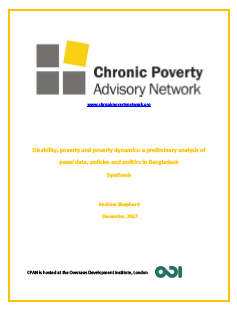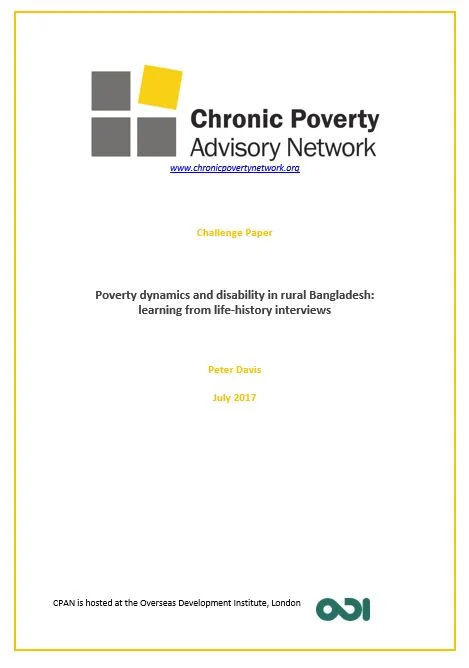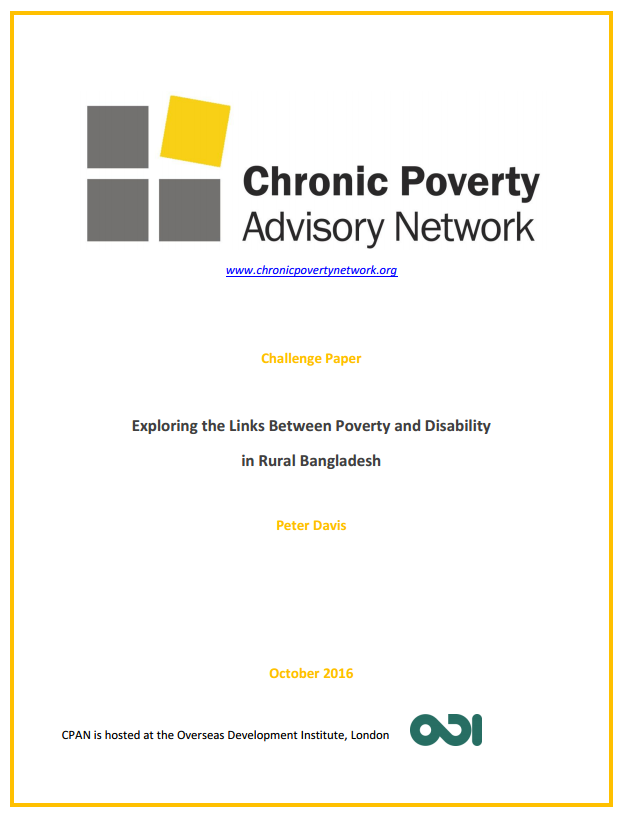While it is generally understood today that disability may cause poverty, and that poverty may also precipitate the onset of disability, less understood are the nuances of the relationship. Specifically, there remains a lack of disaggregation of both poverty and disability, and a lack of understanding of the relationship between disability and poverty dynamics specifically.
The focus of the paper is on persistently poor women with disabilities in Bangladesh. It seeks to contribute to the disability and chronic poverty policy discourse and work towards developing effective poverty reduction measures by investigating daily activities and coping strategies of poor persons with disabilities. In particular, it employs a rich, three-wave panel dataset, the Chronic Poverty and Long Term Impact Study in Bangladesh, to examine poverty dynamics amongst persistently poor women with disabilities, female heads of poor households with persons with disabilities (HHWPWDs), and female-headed HHWPWDs. It uses regression-based methods to compare labor and education outcomes, public transfers and financial assistance, and primary coping strategies to negative shocks amongst these vulnerable populations to their respective male comparator groups.
Click here to download the full paper
Author: Vidya Diwakar
This paper is part of the project Disability, poverty and poverty dynamics: a preliminary analysis of panel data, policies and politics in Bangladesh.





